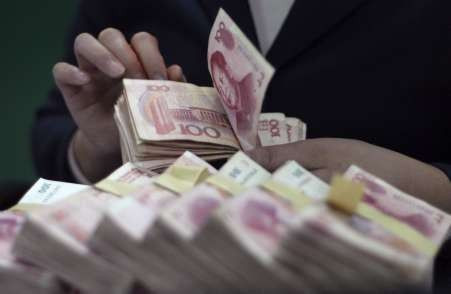US-China bust-up on trade will escalate to crisis levels in 2012

Global trade protectionism will accelerate in the years ahead and the tussle between the U.S. and China over trade and other issues will escalate to crisis levels as early as in 2012, according to an analyst.
One of the biggest risks facing the world economy is a lurch towards protectionism, culminating in a trade war between the US and China that would threaten to spill over to other countries, Capital Economics analyst Julian Jessop wrote in a note on Tuesday.
However, Jessop said the situation could change for better if China eventually accelerates reform in response. If that happens, which he thinks is possible, the world economy could be much stronger.
On Monday, as many as 32 U.S. Senators wrote a strongly-worded letter to Chinese vice-premier, demanding Chinese action on a broad range of topics including the value of yuan, China's restrictions on U.S. beef imports, widespread intellectual property theft and the Chinese government's policy of excluding foreign firms from bidding for government contracts under the guise of an 'indigenous innovation' project.
The Senators called for constructive talks and said it was imperative that the trade disputes between the countries should be solved before the visit of Chinese president Hu Jintao to Washington in January.
We urge China to demonstrate its commitment to adopting a market-determined exchange rate by allowing its currency to appreciate meaningfully in advance of President Hu's visit, the senate panel including both Republicans and Democrats wrote in the letter.
Though the U.S. is visibly wary of escalating tensions with the Chinese, as is manifested in putting off a decision to name China a currency manipulator, the friction will increase in the years ahead and pressure will pile on the U.S. government to call into question Chinese practices and policies.
Jessop says that trade tensions, however will continue to build to crisis levels, with 2012 likely to be the crunch year. He states that four factors make a worsening of the situation more likely than not.
First, the recovery in the US is set to disappoint, with unemployment still close to 10% and the economy sliding towards deflation. Second, protectionism will soon be the only tool left to support US demand once other options have been exhausted. Third, China’s trade surplus with the US is rebounding, making an easy target. Finally, the political cycles in both the US and China will reach a turning point in 2012.
And how will a full-blown trade war play out? First, as is expected, the U.S. will have to resort to increasingly credible threats to the Chinese on a variety of disputes, mainly the yuan's undervaluation. Jessop says the U.S. could pass legislation allowing currency undervaluation to be designated as a subsidy which will open the door for the imposition of countervailing duties on Chinese imports.
Jessop predicts that the trade war with China will spill over into other countries, notably the low-cost developing countries. The U.S. is likely to take targeted action against such countries, possibly citing weak labor and environmental standards, in order to forestall the redirection of Chinese exports to the US via these countries. He also says other developed nations may also join any US action against China to prevent the dumping of cheap Chinese goods in their markets.
He says the picture could be different if China responds positively to extreme pressure and agrees to rebalance its economy and boost domestic demand through fiscal stimulus and structural reforms.
However, in the next few years, uncertainty about the outcome of a trade war will be another drag on growth. It will also be some time after the war ends before the peace dividend comes through.
© Copyright IBTimes 2024. All rights reserved.





















